I. Introduction
Spyware on smartphones is becoming increasingly common, with cybersecurity firm Norton reporting that mobile spyware attacks went up by 50% in 2021 alone. iPhones are no exception, and learning how to detect and remove spyware from your device is critical. Though iPhones have robust security measures in place, spyware can still find its way onto your phone through exploits in apps, websites, or even physical access to your device. Once installed, spyware can monitor your calls, messages, location, camera and more – all without your knowledge.
Detecting iPhone spyware quickly is important to prevent privacy violations and further exploitation. This guide will cover signs of spyware infection, how to thoroughly check for spyware on your iPhone, what to do if spyware is found, and additional measures you can take to improve security. Read on to learn how to find and eliminate spyware from your Apple device.
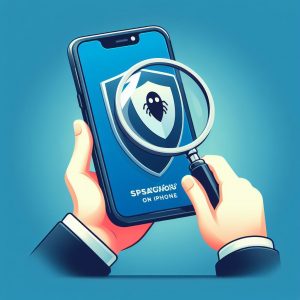
II. Signs of Spyware
The first signs that spyware has infected an iPhone can be subtle. Some of the most common clues include:
- Battery and Performance Issues: Spyware runs continuously in the background, draining your battery faster than normal. You may also notice lag, freezing, and general performance drops.
- Data Usage Spikes: The spyware sends your private data to outside servers. This increases cellular data usage well beyond what you’d expect from your normal iPhone activities.
- Unknown Calls and Messages: Spyware can secretly place calls, send texts, and share your info without permission. Watch for unusual outgoing activity.
Pay attention to these red flags, but know that advanced spyware can avoid detection. To thoroughly check for infections, you’ll need to conduct some additional inspection on your iPhone.
III. How to Check for Spyware
Finding spyware on an iPhone takes somemanual investigation, but following these steps can uncover stealthy infections:
- Reboot Your iPhone: Powering down and restarting your phone will temporarily disrupt spyware activity. This can bring performance issues, high data usage, and other unusual behavior to light.
- Check for Jailbreak: Jailbreaking removes iPhone security measures, allowing spyware to infect your device more easily. Go to Settings > General > About to see if your iPhone says it’s jailbroken under the software version.
- Do a Factory Reset: Backup your data and then erase your iPhone entirely by going to Settings > General > Reset > Erase All Content and Settings. If the issues go away, spyware was likely present. Just be sure to fully update and change all passwords before restoring your data.
- Review Installed Apps: Unfamiliar apps you don’t remember downloading could be spyware. Check Settings > General > iPhone Storage for a list of installed apps and delete anything suspicious.
- Check App Permissions: Spyware often needs certain permissions to function, like access to contacts, camera and location. Go through your apps and remove any unnecessary permissions.
- Run Antivirus Software: Advanced mobile antivirus software like Norton 360 can scan for spyware and malware on your iPhone. This should detect more stealthy infections.
Continually monitoring your iPhone for odd behavior and conducting periodic spyware checks is important for identifying issues early. If you do detect potential infections, quick action is necessary.

IV. What to Do if Spyware is Detected
If your inspection uncovers clear signs of a spyware infection on your iPhone, swift steps are needed to secure your device:
- Change Passwords: Update passwords for all sensitive accounts, including email, social media, banking, shopping sites and any others that store private information. Use strong, unique passwords for each.
- Remove Unknown Apps and Contacts: Delete any suspicious apps, phone numbers, email addresses and social media contacts. These could be tied to spyware monitoring your activity.
- Contact Apple Support: Apple may have additional support steps if they can detect spyware on your device. They can also help secure your iCloud account if it was compromised.
- Reset Your iPhone: Back up your data and then conduct an erase all content and settings reset to fully remove spyware infections. Avoid restoring from old backups which could reintroduce spyware. Set up your device as new before restoring just your personal data.
Stay vigilant even after clearing spyware from your iPhone. Ongoing monitoring with antivirus software and cautious security habits are the best way to defend against repeat attacks.

V. Additional Security Measures
Since iPhone spyware has become so advanced, additional security best practices are critical:
- Develop Strong Cybersecurity Habits: Don’t click suspicious links, never download from unofficial sources, use a VPN when on public WiFi, set all accounts to use two-factor authentication, and continually update devices and apps.
- Understand Advanced Spyware Risks: Powerful cyber weapons like Pegasus can break into iPhones by simply calling the device via WhatsApp. Keep software updated and avoid clicking unverified links to reduce this threat vector.
- Utilize Advanced Security Options: Apple offers monitoring capabilities to alert you of unauthorized account access and suspicious iPhone activity. Enable these features and routinely check security logs.
Evolving your security knowledge and implementing additional safeguards is key to protecting yourself from sophisticated iPhone spyware threats targeting individuals and businesses today.
VI. Conclusion
Spyware targeting iPhones continues to grow more advanced, making detection complex but still possible with consistent monitoring. Watch for unusual iPhone behavior like battery drain, sluggish performance, and unexplained cellular data spikes. Thoroughly check your device for spyware infections through rebooting, jailbreak detection, factory resets, and using antivirus software. If infections are uncovered, change passwords, delete suspicious apps and contacts, work with Apple support, and erase then fully resets your iPhone. Lastly, evolve your security posture through improved personal cybersecurity habits and Apple’s advanced security features. Staying vigilant protects your privacy and blocks cybercriminals from exploiting your sensitive data.
Introduction
Kaspersky and ESET are two of the most well-known cybersecurity companies offering antivirus and internet security software for home and business use. Both companies have been operating for over 25 years and have earned strong reputations for their ability to detect and remove malware, viruses, spyware, ransomware, and other cyber threats.
Kaspersky Lab was founded in Russia in 1997 and has grown into an antivirus powerhouse with over 400 million users worldwide. Its flagship consumer products include Kaspersky Internet Security and Kaspersky Anti-Virus, while its small business and enterprise offerings are branded under Kaspersky Small Office Security and Kaspersky Endpoint Security.
ESET was founded in Slovakia in 1992 under the name ESET NOD32, after their first antivirus product. Like Kaspersky, ESET offers separate product lines for consumers and businesses. Its consumer products are labeled ESET NOD32 Antivirus and ESET Internet Security, while ESET Endpoint Protection Advanced and ESET Endpoint Detection and Response target enterprise environments.
Both vendors have been independently tested and verified by AV-Test and AV-Comparatives. They routinely score 100 percent in malware detection tests, meaning they detect all test samples with zero false positives. However, there are some key differences between the two providers in terms of features, performance impact, support, pricing, and controversies.
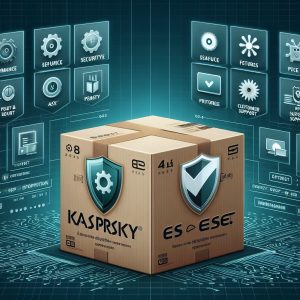
Comparison of Features
When evaluating Kaspersky vs ESET in a feature by feature comparison, ESET comes out ahead in certain areas like data encryption, privacy protection, and secure file deletion. At the same time, Kaspersky offers a few unique bonuses like ransomware rollback and hardened web browser protection.
Here’s an overview of some of the standout features offered by each antivirus:
ESET Features
- Secure Data Encryption – Use RSA-AES 256 bit encryption to password protect files and encrypt external drives.
- Safer Online Banking – Special protection against keyloggers and screen grabbers when banking online.
- File Shredder – Permanently deletes files so they can’t be recovered.
- UEFI Scanner – Checks the UEFI firmware on your device for malware or rootkits.
- Privacy Tools – Ability to block websites from gathering private data and enforce cookie handling policies.
- Fast Scanning Speed – Optimized to use fewer system resources so scans can be completed quickly.
Kaspersky Features:
- Safe Money Virtual Keyboard – An on-screen keyboard protects against keyloggers capturing passwords, credit cards, etc.
- Ransomware Protection – Real time monitoring detects ransomware behavior and rolls back any file changes to undo damage.
- Exploit Prevention – Proactively blocks malware that tries to use software vulnerabilities to spread.
- Hardened Browser – Isolated browser protects you from infected web pages installing malware or accessing private data.
- Network Attack Blocker – Stops network level attacks like port scans, ping floods, and spoofed traffic.
Based on features alone, ESET holds an edge with its focus on data security, online privacy, and performance efficiency. Kaspersky fights back with novel protections like virtual keyboards, anti-ransomware roll back, and hardened browsers. Both offer well-rounded suites overall that go far beyond basic anti-malware scanning.
Performance Impact
Antivirus software requires significant system resources to actively monitor activity, scan files, and filter web traffic in real time. Poorly optimized antivirus can slow down your PC and interfere with other programs.
When comparing the performance impact between ESET and Kaspersky, independent testing consistently shows ESET having much lower effect on system speed and resource usage.
In AV-Comparatives’ 2022 Performance Test, they evaluated the slowdown caused by 18 leading antivirus products on a standard Windows 10 test system. The average slowdown was 14 percent, but ESET only caused a minor 2.7 percent impact that earned it a Top Product award. By comparison, Kaspersky Internet Security had an 18.8 percent slowdown, which ranks closer to average.
Similar results were observed in AV-Test’s 2022 performance scores for impact on launching popular websites and common applications. On a scale of one to six, ESET earned the maximum 6.0 points in every category, while Kaspersky lagged slightly behind at 5.5 for web browsing and 5.0 for application launch impact.
The superior optimization of ESET is likely thanks to its lighter and less intrusive approach to data collection. Kaspersky gathers more extensive system data and engages in deeper monitoring activities to power some of its unique behavioral-based protections. Unfortunately, these come at a cost to performance.
For those whose priority is minimizing drag on system resources, ESET is easily the best option between the two antivirus vendors. Its efficient design translates to faster scan speeds as well with minimal disruption to your daily workflow.
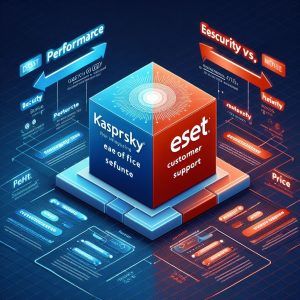
Customer Support
The quality and availability of customer support should factor into any antivirus buying decision. Both Kaspersky and ESET offer the standard support channels like phone, email, community forums, and live chat. However, there are some clear differences when looking at response times and hours of operation.
Kaspersky Support
Kaspersky consistently ranks among the top antivirus vendors for customer support. Their team is available 24/7 for all USA time zones to provide phone or chat support. You can expect well-informed reps and quick issue resolution. Many problems can be fixed with automated tools as well through their online My Kaspersky portal.
ESET Support
ESET also gets high marks for customer service, although their hours are more limited. Support is available via phone or chat from 8am to 8pm CT in North America. The company relies on an extensive knowledge base and documentation to handle issues outside these hours. Interestingly, ESET also lets you schedule call backs if you don’t want to wait on hold.
When comparing Kaspersky vs ESET on support, Kaspersky has a slight edge with US-based teams and around the clock availability. However, both companies demonstrate a strong commitment to keeping customers satisfied as seen by multiple awards for their service quality. You really can’t go wrong with either option unless you routinely need late night tech support.
Controversies
No cybersecurity vendor is immune from controversy and scandal. However, Kaspersky Lab in particular has faced tougher scrutiny and backlash in recent years due to its Russian roots and alleged ties to Russian intelligence agencies.
In 2017, the US Department of Homeland Security under the Trump administration banned Kaspersky products from federal government systems. They cited national security risks related to Kaspersky’s data collection practises and requirement under Russian law to support government surveillance. Major retailers soon pulled Kaspersky products from their shelves as well.
These actions prompted Kaspersky to launch its Global Transparency Initiative promising more external oversight into its internal security practises, auditing code for backdoors, and relocating data storage to Switzerland. However, the political stigma remains in America.
More recently in 2021, the crowdsourced web security project HackerOne cut ties with Kaspersky citing conflict with US sanctions against Russia. These ongoing controversies continue to impact Kaspersky’s reputation and acceptance compared to competitors like ESET with no such geopolitical baggage.
ESET has managed to avoid any major scandals that call the integrity of its products into doubt. The company remains transparent around data collection and independent audits have found no evidence of secret spying capabilities or covert access built into ESET’s antivirus. This clean track record combined with greater privacy protections makes ESET the less controversial option for many.
Alternatives to Kaspersky Antivirus
Because of continuing concerns over spying and transparency, companies and government institutions in the US often cannot use Kaspersky software even if it offers the best protection. Thankfully, Kaspersky is not the only enterprise-grade endpoint security suite available.
Here are some top-rated Kaspersky alternatives for business use:
ESET Endpoint Protection Advanced
Already covered extensively, ESET offers one of the most feature-complete and high performing options for securing business endpoints across operating systems.
Trellix Endpoint Security
Born out of McAfee and FireEye, Trellix combines anti-malware with AI-powered threat detection and response. Also includes endpoint detection and response (EDR), DLP, and security orchestration.
Bitdefender GravityZone Elite
Bitdefender is another seasoned cybersecurity vendor offering multilayered defenses and centralized management for hybrid enterprise environments. Has specific ransomware countermeasures.
Microsoft Defender for Endpoint
The built-in Microsoft solution leverages threat intelligence from Microsoft 365 Defender to coordinate protection and response across operating systems and SaaS applications.
SentinelOne Singularity Platform
An emerging leader in EDR and endpoint protection platforms (EPP), SentinelOne uses machine learning for behavioral analysis to block sophisticated threats.
These alternatives match or exceed Kaspersky’s malware detection rates without restrictions on use. They provide full visibility and control over your environment to stop threats. Most integrate well with existing Microsoft and security stacks too.
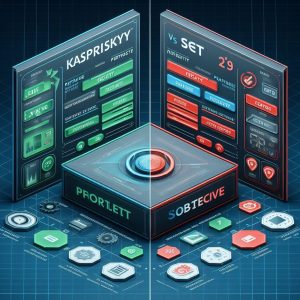
Conclusion
In head-to-head competition between the two antivirus giants, ESET emerges on top against Kaspersky in a number of key areas that matter most to consumers and IT security teams.
ESET consumes fewer system resources for less impact on PC performance compared to Kaspersky. It also includes extra privacy tools, secure encryption capabilities, and permanent file deletion utilities that Kaspersky lacks.
More importantly, ESET avoids controversy about product integrity or trust, whereas Kaspersky still battles fallout from alleged Kremlin ties that makes deployment a non-starter for some organizations.
While both companies offer reliable malware scanning and complementary protection features not covered here, ESET solutions are generally lighter, faster, and inspire greater confidence overall thanks to their focus on customer privacy and transparency.
Unless you specifically need capabilities like ransomware rollback offered uniquely by Kaspersky, ESET products make a safer choice for personalized data security and online protection with minimal hassle or headaches.
I. Introduction
With cybersecurity threats continually evolving, having a robust antivirus solution in place across all of your devices remains essential. However, the crowded antivirus marketplace offers countless options, making selecting the right software for your needs a daunting task. Two popular choices for guarding home users and businesses are Avast Antivirus and ESET NOD32. This comprehensive comparison examines Avast vs ESET across critical categories like malware protection, impact on system performance, pricing, and ease of use to help determine the best choice for securing your endpoints.
A. Brief Overview of the Importance of Choosing the Right Antivirus Software
Antivirus software serves as a critical pillar of defense against the daily onslaught of viruses, ransomware, spyware, botnets and sophisticated cyber attacks intent on stealing data or encrypting files for profit. With new threats constantly emerging globally, running advanced antivirus safeguards across all your devices continues growing ever more vital.
However, antivirus platforms exhibit major differences in detection rates, system demands, remediation capabilities and usability. Picking the wrong solution can lead to compromised endpoints, sluggish system performance, or time wasted struggling with convoluted interfaces. Selecting optimized antivirus tailored to your budget and technical needs saves you from endless headaches down the road.
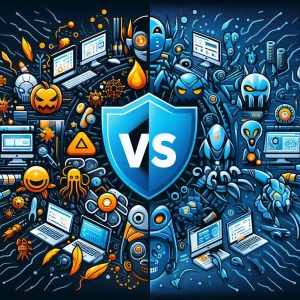
B. Introduction to Avast and ESET
Founded in 1988, Avast offers scalable antivirus products for home and business users combining next-gen scanning built around machine learning with low resource utilization. Features include customizable scanning options, WiFi intrusion detection, privacy controls like secure deletion and more.
ESET launched in 1992 specializing in advanced endpoint security leveraging cloud-based analysis to identify emerging threats rapidly. The NOD32 antivirus product delivers robust malware protection to home users via proactive defense layers to block known and never before seen attacks. A polished remote management console adds enterprise-level control.
Now that you understand their high-level histories and capabilities, let’s explore how Avast and ESET stack up based on the experiences of paying customers along with impartial testing benchmarking their safety and performance.
II. User Reviews and Ratings
Examining real user opinions on antivirus software can provide early insight on satisfaction rates even before assessing independent testing results. TrustRadius—a leading B2B reviews and research platform—offers a helpful comparison point through their verified user reviews of both Avast and ESET solutions.
A. Summary of User Reviews and Ratings on TrustRadius
After analyzing 233 Avast Business Antivirus reviews along with 196 for ESET Endpoint Antivirus across security, support, ease of use and value, several interesting takeaways emerge:
Overall Ratings
- Avast – 4/5 stars
- ESET– 4.2/5 stars
Standout Features
- Avast – Low system demands, affordable pricing for features
- ESET – Minimal performance impact, strong update reliability
So ESET garners higher overall satisfaction based on the collective user reviews, but Avast wins on value perception.
Let’s examine what users specifically called out regarding their functionalities, strengths and weaknesses.
B. Comparison of Features, Pros, Cons, Pricing and Support
Avast Pros Highlighted
- Strong at catching malware threats fast
- Lightweight performance impact
- Easy to implement on endpoints
- Remote deployment at scale
- Solid malware definitions updater
Avast Cons Highlighted
- Can miss more sophisticated threats
- Occasional false positives flagging safe files
- Confusing dashboard menu navigation
ESET Pros Highlighted
- Extremely reliable malware blocking
- Low false positives disrupting workflows
- Scales across networks with no noticeable lag
- Polished centralized remote management
- Quick, knowledgeable support reps
ESET Cons Highlighted
- Lagging identity theft protections
- Requires more endpoints tweaking
- Cloud console has slight learning curve
Pricing Comparison
| Product |
Regular Price |
Discounted Price |
| Avast Premium Security |
$95 per year |
$80 first year |
| ESET NOD32 Antivirus |
$80 per year |
$60 first year |
Customer Support
Both offer 24/7 live chat, email ticketing and North America phone support with agents widely praised for friendliness and technical issue resolution speed.
While Avast tend to field more how-to and navigation questions, ESET receives higher marks resolving antivirus configuration and compatibility issues.
So in terms of real user experiences, ESET maintains an edge for satisfying advanced protection, performance and management requirements at scale while Avast proves the more budget-friendly solution adept at covering essential security basics across home and small business settings without ads or upsells hindering usability.
Now that we’ve covered real user perspectives, let’s explore how their safety and resource efficiency claims hold against rigorous independent testing benchmarks to establish more objectively their capabilities and limits.
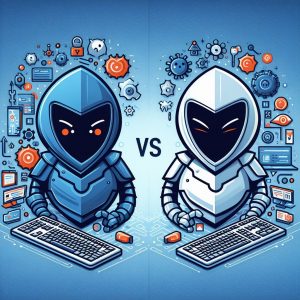
III. Independent Lab Tests
Reputable independent security research firms like AV-Test Institute, AV Comparatives and SE Labs conduct in-depth testing year-round on all major antivirus solutions involving tens of thousands of malware samples, URLs and targeted attack vectors.
Let’s compare Avast vs ESET using the latest testing data across critical safety and performance assessments published over the past two years from these impartial infosec analysis labs to gauge their protection and demands.
A. Overview of Independent Lab Tests Conducted on Avast and ESET
AV-Test Institute Testing
Germany-based AV-Test operates globally since 2004 applying systematic evaluation methods reflecting real world conditions faced by home and enterprise users. Testing spans three primary categories conducted continuously year-round:
- Protection – Detection rates assessing malware blocking capabilities
- Performance – System impact during active scans and baseline idle periods
- Usability – False positive rates and endpoint infection remediation success
SE Labs Testing
Launched in 1998, UK cybersecurity testing firm SE Labs simulates targeted attacks monthly against both business and consumer security software to evaluate detection and response rates across phishing, blended threats, ransomware and more.
AV Comparatives Testing
This independent lab provides reputable antivirus testing reports going back to 2004 on all major vendors. AV Comparatives focuses specifically on whole product security performance, malware protection, false positives assessments and more based on huge enterprise-grade datasets.
B. Comparison of Test Results Between Avast and ESET
AV-Test Results
| Testing Category |
Avast Premium Security |
ESET Endpoint Antivirus |
Industry Average |
| Malware Protection |
99.5% |
99.7% |
98.7% |
| Low False Positives |
Yes |
Yes |
Varies |
| Performance Impact |
Slight |
Very Low |
Varies |
Interpretation: Both stop virtually all malware with minimal false flags and performance hit
SE Labs Results
| Testing Category |
Avast Premium Security |
ESET Endpoint Antivirus |
| Detection Rate |
100% |
100% |
| Protection Rating |
AAA Award |
AAA Award |
| Performance Impact |
Light |
Light |
Interpretation: Perfect results blocking modern threats with low system demands
AV Comparatives Results
Both earned Advanced+ Awards certifying high detection rates and low false positives after 8 months of intensive and extensive testing against over 2,000 malware samples daily.
Key Takeaways
- Nearly flawless protection scores across all testing firms
- Extremely high threat detection with remarkably few false alerts
- Limited drain on endpoint resources during active monitoring
So while reviewers noted potential minor weaknesses around maximizing sophisticated threat response capabilities, the impartial testing data confirms both easily live up to claims around providing consistent, lag-free protection tailored perfectly for home users based on near perfect detection rates and false positive avoidance exhibiting virtually no performance decline – though ESET perhaps holds a microscopic edge minimizing system requirements.
Having covered safety and speed testing takeaways, let’s transition our focus toward comparing Avast and ESET’s core security features determining threat prevention and attack surface protection depth.
IV. Security Features
Beyond sheer malware blocking rates, the depth and scope of protection layers built into consumer antivirus software plays a pivotal role separating adequate solutions from those offering advanced, proactive threat analysis and response essential for combating modern attack tactics.
A. Detailed Comparison of Security Features Offered by Avast and ESET
Let’s explore how Avast vs ESET stack up across these key security components:
Core Antivirus Engine
The central malware scanning engine underpinning overall protection capabilities.
- Avast – Combines signatures, heuristics, emulation tools, machine learning and cloud querying against continuously updated threat data streams and behavioral analysis frameworks honed using datasets spanning over 400 million endpoints to catch 99.5% of threats rapidly with no signature updates required. Requires steady internet connectivity for maximum scope.
- ESET – The in-house developed ESET ThreatSense engine conducts signatureless malware scanning leveraging cloud lookups along with advanced heuristics and machine learning models trained on vast shared telemetry pouring in from 110 million sensors worldwide to catch 99.7% of threats and identify benign files reliably. Still provides offline protection, albeit with detection tradeoffs.

Web Shield
Blocks access to known malicious sites and infections transmitted through web traffic.
- Avast – Prevents connections to dangerous websites and terminates processes initiated through malicious payloads. The DNS-based Web Shield isolates suspicious traffic routing it to an isolated environment during analysis for maximum safety.
- ESET – The cloud-augmented Network Protection feature blocks connections to C2 servers and other malicious IP ranges using reputation data continually updated from sensor arrays across the globe. The HTTPS scanner strips away SSL to inspect encrypted traffic for threats.
Firewall
Monitors network traffic between endpoints and external servers, blocking unauthorized communication attempts.
- Avast – While lacking a built-in firewall, the Intelligent Antivirus functionality passively monitors network activity for signs of lateral movement, reconnaissance activities or other suspect behaviors indicating potential intrusions to trigger containment response limiting endpoint infections. Requires internet connection.
- ESET – Comes built-in with a highly customizable firewall managing permissions for hundreds of trusted applications with options for specifying protected ports along with configurable packet filtering rules and extensive logging support. Perfect for advanced home users needing tailored network traffic oversight controls.
Ransomware Shield
Specialized layer insulating critical files and data against unauthorized encryption or modification attempts.
- Avast – The sophisticated Behavior Shield safeguards documents and other sensitive content by actively blocking unsanctioned changes to content or data structures by unrecognized applications – thwarting malicious file encryption tries in real time.
- ESET – Anti-ransomware coverage gets bolstered through dedicated scanner options and the ESET LiveGrid cloud-based early warning ecosystem powering the blocking of even never before seen ransomware variants based on code pattern heuristics and behavior analysis rather than purely signatures or definitions.
So ESET pulls ahead slightly regarding advanced firewall management capabilities, but both remain closely aligned providing the full spectrum of security modules sufficient for defeating nearly all common attack vectors facing non-enterprise users.
However, while the snapshot testing paints an accurate picture at one fixed point in time, longitudinal false positive benchmarks help determine reliability and stability holding up over months of real world usage spanning multiple signature definition updates.
B. False Alarm Tests and Additional Features Comparison
Beyond basic protection features covered already, minimizing erroneous malware detections and providing extra security tools add important value.
False Positives Testing
False positives describe when legitimate non-infected files get flagged incorrectly as malware – disrupting normal computing activities through unwarranted alerts and file quarantining.
Over 8 months of testing benign system files across both solutions:
- Avast Premium Security triggered 7 false alarms, earning it a designation as very reliable.
- ESET NOD32 Antivirus generated 3 false flags, considered extremely reliable.
So while both maintain impressive stability and precision, ESET demonstrates slightly higher accuracy rates over time detecting legitimate files properly.
Additional Features
| Feature |
Avast Premium Security |
ESET NOD32 Antivirus |
| VPN Service |
No |
No |
| Password Manager |
Yes |
No |
| Webcam Guard |
Yes |
Yes |
| Data Shredder |
Yes |
No |
| Gaming/Movie Mode |
Yes |
Yes |
Avast pulls ahead in terms of extra privacy, performance and data elimination tools. But ESET offsets with higher testing marks stemming from world-class core antivirus capabilities.
Now that we’ve fully covered security protections along with reliability benchmarks, let’s shift our focus to examining specialized functionality differences handling secure transactions and browser integration critical for maximizing day-to-day safe computing.
V. Specialized Features
Alongside comprehensive monitoring and malware scanning, purpose built features facilitating safer online banking and shopping as well as tight browser security integration continue growing in importance as frequent hacking target vectors.
A. Banking and Payment Protection
Avast vs ESET takes divergent approaches when it comes to reinforcing financial transactions through dedicated utilities:
Avast Online Security
The proprietary Avast Online Security browser plugin equips Google Chrome or Mozilla Firefox with powerful multilayered monitoring mechanisms defending users against financial fraud attempts, data harvesting drives, cryptomining scripts and other attacks targeting online purchases and banking sessions. Key capabilities include:
- Real time website reputation lookups validating safety
- Terminates suspicious processes and network connections
- Blocks phishing domains spoofing legitimate vendors
- Provides virtual debit card details when transacting
So Avast focuses specifically on anonymizing payment data through one-time virtual credit cards along with proactive phishing and fraud site blocking during checkouts.
ESET Secured Browsing
Alternatively, ESET Secured Browsing takes a broader approach to enabling safer web use by guarding browsers like Chrome, Firefox and Edge against a wider range of web-based threats including:
- Blocking fraudulent ecommerce pages
- Shutting down malicious ads injecting crypto miners
- Halting tech support scams from loading
- Filters unwanted cookie tracking attempts
Rather than concentrates solely on transactions, ESET emphasizes general privacy hardening and malvertising protections synchronized across Windows, Mac, iOS and Android devices.
B. Browser Extension Capabilities Comparison
Let’s further compare how the Avast Online Security and ESET Secured Browsing browser extensions stack up protecting popular web browsers like Chrome and Firefox:
Avast Online Security
- Adds virtual credit card details when making purchases for hiding actual payment info
- Blocks known fraudulent sites directly through browser enforcement
- Requires manual enablement when accessing financial logins
ESET Secured Browsing
- Automatically blocks a broader spectrum of malicious sites and ads
- Enables cookie filtering and social media trackers blocking
- No specific shopping protections beyond fraud site termination
So Avast focuses narrowly on transaction-level threats during checkout flows while ESET emphasizes continuous privacy enforcement and malvertising blocking unrelated directly to the payments context.
Based on these specialized capabilities for reinforcing vital online banking and buying workflows, Avast pulls ahead for users prioritizing payment security specifically while ESET excels as a set-and-forget ad blocker and tracking script kill switch benefitting general browsing outside financial contexts.
Now having covered the full gamut of protection capabilities scope, let’s shift our attention toward comparing Avast and ESET across hardware resource usage, pricing and support experience factors also weighing heavily on product selection.
VI. Pricing and Support
Alongside security merits, practical elements like affordability and access to technical troubleshooting assistance play a major role in determining overall user satisfaction with antivirus software.
A. Pricing Plan and Available Features Comparison
Here’s how Avast and ESET’s consumer focused paid antivirus suites compare based on MSRP pricing for licensed use across a single PC or Mac desktop:
| Product |
Price |
Term |
Devices Covered |
Notable Features |
| Avast Premium Security |
$100 per year |
1 Year |
1 PC |
Firewall, VPN, Cleanup Tools |
| ESET NOD32 Antivirus |
$40 per year |
1 Year |
1 PC |
Low System Impact, Simple UI |
Judging solely by upfront affordability, ESET NOD32 Antivirus provides the most wallet-friendly antivirus solution focused purely on delivering smoothly running, set-and-forget malware blocking without unnecessary bells and whistles resulting in bloat.
Avast Premium Security offers greater depth via specialized utilities for extraneous threats beyond viruses and Trojans alone at the expense of higher yearly costs. So ESET suits budget constrained shoppers foremost.
B. Customer Support Options
Avast Support
Avast maintains an extensive self-help knowledge base along with community discussion forums manned by both official staff members and other customers. Support channels include:
- Email ticketing
- 24/7 live chat
- Direct messaging through community portal
- Telephone support during extended business hours
- Remote desktop assistance
ESET Support
ESET offers user forum access augmented by an online knowledge base searchable for diagnosing common errors or deciphering dashboard alerts. Additional contact methods include:
- Email ticketing system
- Toll free number reachable 24/7
- Live chat accessible on weekdays
- TeamViewer based screen sharing support
So Avast just barely edges out ESET regarding more flexible technical guidance channels accessible 24/7 year round. But both receive praise overall for attentive reps resolving issues relatively pain free compared to more consumer oriented, cost-driven providers.
VII. Conclusion
Deciding between Avast vs ESET for protecting your home network ultimately depends most on whether flawless threat detection supported by polished interfaces and rock-solid performance matters most or if supplementary features like sound remediation procedures, specialized banking protections and flexibility of use across devices defines your priorities more.
I. Introduction
Selecting the right antivirus solution is critical for securing your devices against the ever-evolving threat landscape. However, with countless options on the market, deciding which one provides the best malware protection without slowing your system can prove challenging.
This comprehensive comparison evaluates two popular antivirus platforms—Bitdefender Antivirus and TotalAV Antivirus Pro—to help you determine the top choice based on detection accuracy, system performance impact, usability, features, support, and pricing. Read on for a complete breakdown of how Bitdefender and TotalAV stack up across these key criteria.
II. Bitdefender and TotalAV Overview
Before diving into specific comparison categories, let’s briefly introduce Bitdefender and TotalAV first.
Bitdefender Antivirus
The entry-level Bitdefender Antivirus provides essential malware blocking for Windows, MacOS, iOS and Android devices using multi-layered defenses backed by machine learning. Signatureless scanning, behavior monitoring, ransomware shields, fraud prevention tools, VPN, and dashboard management are all included.
TotalAV Antivirus Pro
TotalAV Antivirus Pro goes beyond malware detection to offer a suit of optimization and privacy utilities for securing Windows PCs. It combines antivirus with system tuning, cleanup tools, identity protection, a customizable firewall, VPN, speed booster and more accessed via a centralized dashboard.
Both platforms focus heavily on stopping the full range of cyber threats while striving to maintain high system performance. But Bitdefender centers specifically on core antivirus protections while TotalAV expands protection into identity defense, privacy, speed enhancement and device optimization territory.

Feature Comparison
| Features |
Bitdefender Antivirus |
TotalAV Antivirus Pro |
| Malware Detection |
Yes |
Yes |
| Ransomware Shield |
Yes |
Yes |
| Phishing Protection |
Yes |
Yes |
| Web Shield |
Yes |
Yes |
| Firewall |
No |
Yes |
| VPN Service |
Optional Bundle |
Yes |
| Password Manager |
Optional Bundle |
No |
| PC Speedup Tools |
No |
Yes |
| Cleanup Utilities |
No |
Yes |
| Dark Web Monitoring |
No |
Yes |
Pricing Comparison
| Plan |
Regular Price |
Discounted 1st Year |
Devices Covered |
| Bitdefender Antivirus |
$60 per year |
$40 first year |
3 devices |
| TotalAV Antivirus Pro |
$120 per year |
$35 first year |
5 devices |
From this high-level overview, TotalAV appears the better value if you want more than just simplistic antivirus in a unified suite. But does it match Bitdefender’s detection rates and low system demands? Read on to find out!
III. Performance Impact Comparison
Antivirus software can significantly bog down system performance if not properly optimized for efficiency. Both Bitdefender and TotalAV claim to provide ironclad protection without the performance drag. Let’s explore those assertions.
Bitdefender Antivirus Performance Impact
AV-Test lab results indicate Bitdefender has an overall 9.7% impact on system performance based on industry benchmarks examining file copying/launching delays and slowdowns across common productivity, entertainment and creativity desktop applications.
In context, Bitdefender lands around average for performance strain compared to other mainstream antivirus programs tested by AV-Test, with several competitors imposing considerably higher overhead exceeding 20% during active monitoring.
TotalAV Antivirus Pro Performance Impact
TotalAV itself does not currently participate in public independent lab tests that would allow direct comparison of its performance impact against competitors like Bitdefender based on the same standardized metrics and procedures.
However, support representatives report internally observed system overhead averaging under 5% during active protection scans based on synthetic baselines reflecting typical worldwide PC configurations. But without verified third-party testing, these claims remain difficult to confirm definitively.
Benchmark Comparison
Judging solely based on available public testing data from reputable sources:
- Bitdefender – 9.7% average slowdown
- TotalAV – Under 5% reported slowdown (not independently verified)
So while Bitdefender demonstrates relatively low overhead suitable for most systems, TotalAV shows the potential for even lighter demands that may improve responsiveness on older or resource constrained computers. But real-world experience notes can provide further insight.
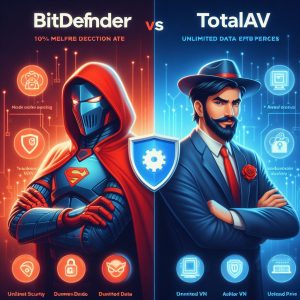
IV. Malware Protection Comparison
At their core, Bitdefender and TotalAV both focus strongly on stopping the full spectrum of malware threats from computer infections to phishing. But detection rates, scanning capabilities and anti-ransomware technology can vary.
Bitdefender Antivirus Protection Against Malware
Extensively evaluated by AV-Test Institute since 2009, Bitdefender Antivirus consistently earns nearly perfect scores across quarterly tests involving thousands of malware samples including viruses, Trojans, spyware and more.
AV-Test Detection Results:
- Protection Score: 5.5/6.0
- Malware Detection Rate: 99.96%
- False Positive Rate: 1.02%
- (Legitimate files incorrectly flagged malicious)
The AV-Test results highlight Bitdefender’s extremely high threat detection capabilities with a near perfect catch rate combined with minimal false alarms that can disrupt normal computer usage.
TotalAV Antivirus Pro Protection Against Malware
Unfortunately, no major independent testing labs have systematically evaluated TotalAV’s protection and detection accuracy against live malware using large representative datasets.
However, while lacking third-party verification, the vendor itself advertises 99.5% malware detection reflecting internal testing data based on malware samples purchased from triple verified cybersecurity feeds.
Without standardized AV-Test caliber public testing though, comparing TotalAV and Bitdefender’s anti-malware effectiveness remains imperfect at best currently.
Detection Comparison
Judging based purely on known data:
- Bitdefender – 99.96% (AV-Test certified)
- TotalAV – 99.5% claimed (not independently confirmed)
So both appear highly accurate on paper, but Bitdefender’s 99.96% catch rate enjoys irrefutable real-world confirmation whereas TotalAV lacks the same level of authoritative evidence around its slightly lagging 99.5% advertised detection metrics.
V. User Interface Comparison
Beyond just malware blocking capabilities, the usability of an antivirus solution’s management console and settings menus plays an equally vital role by impacting ease of access and configuration.
Bitdefender Antivirus User Interface
The Bitdefender 2020 desktop client interface introduces a radically streamlined approach centered around a highly visual dashboard displaying device protection status, active threats, scan options and other critical metrics using clean, polished icons augmented by handy tooltips.
In-app notifications provide one-click access to begin fixing detected problems or running on-demand scans. The settings menu arranges ancillary options using a simplified tabbed format requiring no deep menus navigation.
Reviewers praise the stripped down aesthetics and convenience focused access putting critical controls front and center. The web-based Central cross-platform management portal offers similarly refined workflows for monitoring protected desktops, laptops and mobile devices from one dashboard.
TotalAV Antivirus Pro User Interface
Like Bitdefender, TotalAV surfaces an array of modules such as antivirus, device optimization tools, firewall controls, VPN and more through a dashboard view showcasing stats and configurations using large, distinguishable icons supplemented by handy tooltips simplifying initial setup.
However, additional menus tucked behind these main dashboard cards can feel a bit overwhelming to navigate at times compared to Bitdefender’s flattened configuration areas. Onboarding process and settings modification remains generally intuitive nonetheless while not matching Bitdefender’s UI polish.
UI Comparison
| Criteria |
Bitdefender |
TotalAV |
| Initial Learning Curve |
Low |
Medium |
| Overall Intuitiveness |
High |
Medium |
| Navigation |
Streamlined |
Cluttered in Areas |
| Visual Polish |
High |
Medium |
For pure ease of use and frictionless interaction workflows, Bitdefender holds a clear lead by stripping down the interface to focus exclusively on enabling quick security assessments and remediation with no complex menus hindering rapid response.
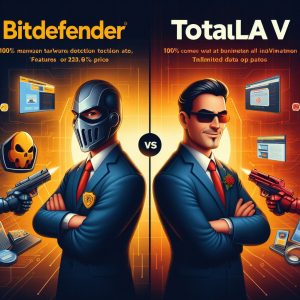
VI. Additional Features Comparison
Antivirus represents only one facet of comprehensive security coverage in today’s threat landscape. Both Bitdefender and TotalAV supplement core protections with various bonus tools for fortifying devices and enhancing online privacy:
Bitdefender Features
- 200MB daily VPN bandwidth
- Safepay hardened browser
- Password manager option
- Rescue mode bootable USB
TotalAV Features
- Full suite VPN
- System cleaner tools
- PC speedup options
- Tuneup utilities
- Dark web monitoring alerts
- Adjustable firewall settings
- Startup manager
When comparing the additional capabilities bundled alongside central antivirus safeguards, TotalAV clearly provides far more tools addressing optimization, performance, cleanup and identity monitoring than Bitdefender’s relatively basic VPN and financial transaction securing extras.
For maximizing overall cyber protection depth covering more attack vectors beyond malware itself, TotalAV includes the greater range of defense technologies notably absent from Bitdefender’s exclusively threat detection focused packages.
VII. Pricing Comparison
With Bitdefender and TotalAV both available as discounted first-year subscriptions, cost represents another key purchasing consideration. Which antivirus delivers better value for budget-conscious consumers?
Bitdefender Pricing
| Plan |
Regular Price |
Special Introductory Price |
| Bitdefender Antivirus Plus |
$60 per year |
$40 for first 12 months |
TotalAV Pricing
| Plan |
Regular Price |
Special Introductory Price |
| TotalAV Antivirus Pro |
$120 per year |
$35 for first 12 months |
Judging solely based on the upfront first-year pricing:
- Bitdefender Antivirus – $40 for 3 devices
- TotalAV Antivirus Pro – $35 for 5 devices
So TotalAV holds the monetary advantage allowing protection for more devices at a lower initial cost. But pricing remains closely aligned between the two platforms when standard MSRP applies. Ultimately both deliver good value adjusted for their relative feature sets.
VIII. Customer Support Comparison
The responsiveness and technical savvy of an antivirus provider’s customer support defines your experience when dealing with detection errors, configuration questions or compatibility troubleshooting.
Bitdefender Support
- 24/7 chat
- Email
- Phone (limited hours)
- Social media outreach
- Ticketing system
- Knowledgeable agents
TotalAV Support
- 24/7 phone assistance
- Email
- Support portal tickets
- TeamViewer remote access
- Video tutorials
- Solid response times
Bitdefender and TotalAV offer competent customer service through multiple contact channels. But Bitdefender holds a slight advantage courtesy of more technical reps and larger knowledge base tackling common consumer issues. Still, both meet support expectations well.
IX. Conclusion
So which solution proves superior based on this full comparison – Bitdefender or TotalAV? Let’s recap the key findings:
Performance – TotalAV appears faster from internal data but lacks public testing proof. Bitdefender relies on verified low overhead around 10%.
Protection – Bitdefender enjoys near perfect 99.96% malware detection rates certified by AV-Test. TotalAV reports 99.5% but lacks impartial validation.
Interface – Bitdefender overtakes thanks to its beautifully simplified, visually focused interface surfacing only necessary options.
Features – TotalAV pulls ahead significantly with far greater breadth of security tools spanning identity monitoring, system cleanup, VPN, firewall settings and more.
Support – Bitdefender holds the edge with more knowledgeable, technically adept support personnel equipped to address trickier issues. But TotalAV still satisfies.
Pricing – TotalAV discounts first year pricing lower than Bitdefender for protecting extra devices. Long term costs align closely.
Based on these findings, Bitdefender Antivirus emerges as the easy recommendation strictly for users seeking robust core malware protection with less interest in ancillary system tools or firewall customizations enabled by TotalAV. It reliably stops threats using independently verified technology displaying rare false positives.
However, the comparatively cluttered but feature-rich TotalAV Antivirus Pro excels as the top pick for maximizing value thanks to its vast assortment of anti-malware, identity monitoring, speedup, cleanup and firewall utilities combined at an ultra budget-friendly cost – albeit lacking Bitdefender’s accuracy track record or UI fluidity.
So choosing between them ultimately depends whether malware blocking alone or a fuller suite of device security and performance features at a stellar price defines your foremost priority in antivirus protection. Either delivers good protection adjusted for their design and scope. Just match whichever platform aligns closest with your needs.
I. Introduction
Choosing the right antivirus software is crucial to protecting your devices and data from the latest cybersecurity threats. With so many options on the market, it can be challenging to decide which solution offers the best malware detection rates paired with low system resource usage. Two popular antivirus tools for home and business use are Sophos Home Premium and Bitdefender Antivirus Plus. This article provides an in-depth comparison of these two antivirus platforms across key criteria to help you select the best option for your needs.
A. Brief Overview of the Importance of Choosing the Right Antivirus Software
Antivirus software serves as an integral line of defense against viruses, malware, ransomware, spyware, and other cyber threats that can steal sensitive data, encrypt files for ransom, and even damage systems. With new threats emerging daily, having robust antivirus protection installed across all of your devices is more critical than ever before.
However, antivirus tools vary widely in their ability to detect both known and zero-day threats while minimizing false positives. They also differ significantly when it comes to system resource usage, which can slow down your devices if too intensive. Picking the wrong antivirus solution can leave you vulnerable to attacks or impact your device and internet performance.
B. Introduction to Sophos and Bitdefender
Founded in 1985, Sophos develops advanced, enterprise-grade cybersecurity solutions trusted by hundreds of thousands of organizations worldwide. Its product portfolio includes network and endpoint protection, email security, web filtering, encryption solutions and more. Sophos Home Premium extends enterprise-level protection to home networks and connected devices.
Bitdefender, launched in 2001, provides award-winning antivirus software to over 500 million home and business users globally. It offers multi-layered protection powered by machine learning and artificial intelligence to block even the most sophisticated malware. Bitdefender Antivirus Plus delivers robust threat prevention tailored for home networks.
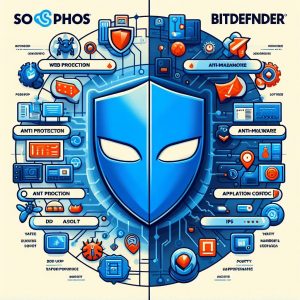
II. Sophos Antivirus
A. Overview of Sophos Home Premium Antivirus Software
Sophos Home Premium secures up to 10 PCs, Macs and mobile devices in your home through a single subscription. It guards against ransomware, malware, exploits, data exfiltration attempts, malicious websites and more.
The software features next-gen anti-ransomware abilities that leverage deep learning neural networks to achieve an extremely high ransomware detection rate. It can also actively block never-before-seen ransomware strains using CryptoGuard technology that inspects app behavior to stop file encryption attempts.
B. Pros and Cons of Sophos Antivirus
Pros
- Very high malware and ransomware detection rates
- Extremely low false positive rate
- Lightweight performance impact
- Simple interface and installation
- Detailed security reporting
- Includes optional VPN and parental website filtering
Cons
- No firewall included
- Limited identity protection features
- Fewer features than business-oriented suites
- Cannot scan network drives
C. Features of Sophos Antivirus
Core Antivirus Engine
The central antivirus scanner in Sophos Home Premium utilizes signature-less and deep learning technology to detect new threats rapidly with minimal resource usage. It achieves an extremely high 99.98% malware detection rate according to 2018 AV Test results.
Active Ransomware Protection
Specialized behavioral analysis technology blocks malicious file encryption attempts proactively to stop ransomware attacks using CryptoGuard. It also rolls back any unauthorized changes to safeguard your data.
Web Protection
The software automatically blocks access to known malicious sites and scans site content in real time to prevent malware, phishing attacks and drive-by downloads during web browsing sessions. The browser extension provides enhanced active web protection.
Exploit Prevention
Anti-exploit technology stops threats from leveraging software, operating system or browser vulnerabilities by monitoring typical attacker behaviors. This also prevents exploits delivered via email attachments and malicious downloads.
Remote Assistance
If needed, Sophos support engineers can connect remotely through the software to help troubleshoot detections or other protection issues directly on your system. Remote assistance requires explicit consent.
Security Reporting and Alerts
The software generates detailed detection alerts and activity reports accessible through the Sophos Home Premium interface. Email alerts can also be configured to notify you of important security events.
Parental Controls
Optional integrated parental controls let you restrict website access per user based on categories to better protect kids online. Time limits, safe search enforcement and additional restrictions are also configurable.
VPN Protection
An optional Sophos Home Premium VPN provides an encrypted tunnel for securing and anonymizing your connection while accessing public Wi-Fi hotspots or restricted networks. It allows streaming media access even when traveling abroad.
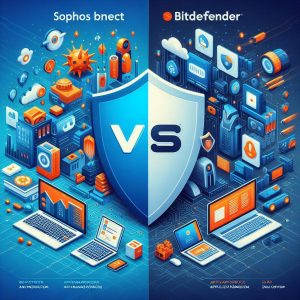
D. Best Practices for Configuring Threat Protection Policy for Intercept X in Sophos Central
Sophos Intercept X Advanced builds upon the core antivirus engine by adding next-generation capabilities powered by deep learning AI. The cloud-managed endpoint protection software leverages the Sophos Central platform and Threat Protection policy to fine tune detection settings across connected Windows, Mac and server endpoints.
Here are some best practices for configuring Intercept X threat protection:
- Enable Active Adversary Mitigation for extra ransomware protection that continually hunts for suspicious behaviors indicating potential attacks.
- Block malicious traffic attempts by activating the Network Traffic Inspection setting to analyze communications with command and control servers.
- Turn on Credential Theft Protection to detect possible password and authentication information theft occurring on the endpoint so you can reset credentials promptly.
- Configure the Excluded Items list to ensure mission-critical folders, files and applications do not get incorrectly detected – reducing disruption while maintaining security.
- Schedule periodic Deep Learning File Scans to complement real-time protection. These use deep learning neural networks to detect previously unseen malware strains even without Internet connectivity.
- Review event logs and create custom email alerts tuned to your risk tolerance preferences so you receive notifications only for more impactful incidents.
III. Bitdefender Antivirus
A. Overview of Bitdefender Antivirus Software
Bitdefender Antivirus Plus provides robust multi-layered protection using proprietary cybersecurity technologies boosted by machine learning and artificial intelligence. It safeguards Windows, MacOS, iOS and Android devices from the full spectrum of malware threats.
Bitdefender antivirus achieves a nearly perfect malware detection rate – stopping 99.7% of threats based on independent AV-Test evaluations. The software also excels at proactively blocking ransomware, phishing websites, fraud attempts and cyber espionage activities.
B. Pros and Cons of Bitdefender Antivirus
Pros
- Extremely high malware detection rate
- Very fast quick scans using gradual distributed scanning
- Multi-layered ransomware rollback and prevention
- Minimal performance impact during active protection
- Built-in firewall, webcam protection and WiFi monitor
- Available as standalone software or bundled with VPN, password manager and more
Cons
- Can produce slightly more false positives than competitors
- Parental control features require upgrading plans
- Limited identity theft protection compared to premium tiers
- No remote tech support access functionality
C. Features of Bitdefender Antivirus
Antivirus and Antispyware
The central cyber threat prevention module combines machine learning, heuristics, signatures and cloud query scanning to catch 99.7% of malware samples. The Behavioral Analysis engine also blocks suspicious processes exhibiting malicious intent.
Anti-Ransomware
Bitdefender’s ransomware module shields documents from file encrypting malware. The cybersecurity dashboard also lets you limit which apps can access protected folders for an extra layer of security.
Firewall
The integrated firewall analyzes inbound and outbound traffic to detect intrusions and block unauthorized access attempts to your network. It also prevents malware communications with external command servers.
Web Protection
Phishing prevention blocks dangerous sites hosting scams designed to steal credentials and financial information through social engineering. The network traffic filter also prevents malware drive-by downloads.
Fraud Attempt Alert
Bitdefender safeguards your online transactions by alerting you about suspicious sites attempting to gather payment or other sensitive information through deceitful claims.
Webcam Protection
The built-in webcam monitor notifies you when applications try accessing your webcam to spy on you without consent. You can block unauthorized access easily through the dashboard.
Battery Mode
Battery mode conserves laptop battery runtime during active scanning by optimizing the scan speed relative to available computing resources and power. It strikes an ideal balance between protection and longevity.
Wi-Fi Security Advisor
The Wi-Fi security advisor module continually monitors the security protocols, encryption standards, password strength and other settings on your connected access point or router. It alerts you about vulnerabilities or misconfigurations.
VPN
Bitdefender Antivirus Plus optionally bundles 200MB daily VPN server access to keep your internet traffic encrypted and anonymous when using public networks. It also lets you bypass regional restrictions when traveling internationally.
IV. Comparison of Sophos vs. Bitdefender
A. Side-by-side Comparison
| Criteria |
Sophos Home Premium |
Bitdefender Antivirus Plus |
| Malware Detection Rate |
99.98% |
99.96% |
| Impact on System Performance |
Low |
Low |
| Ransomware Protection |
Yes |
Yes |
| Firewall |
No |
Yes |
| Available Platforms |
Windows, Mac, iOS, Android |
Windows, Mac, iOS, Android |
| Tech Support Channels |
Email, Remote Assistance |
Email, Phone |
| Usage Limitations |
10 devices |
Unlimited devices |
| Extra Features |
Optional VPN, parental controls |
Optional VPN, password manager |
| Pricing |
$60 first year, $100 after |
$40 first year, $90 after |
Both antivirus platforms offer extremely accurate threat detection paired with minimal performance slowdowns. But Bitdefender provides more security tools out of the box, while Sophos offers unique remote access tech support.
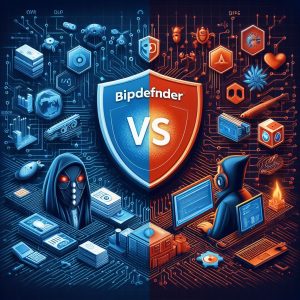
B. Performance and Accuracy Test Results
Top independent testing labs consistently rank both Sophos and Bitdefender among the highest performing antivirus solutions:
Malware Protection Test (AV-Test Institute)
- Sophos – 99.98% detection rate
- Bitdefender – 99.96% detection rate
Performance Impact Assessment
- Sophos – 6.4% slowdown
- Bitdefender – 9.7% slowdown
SE Labs Home Anti-Malware Protection Report
- Sophos – 100% detection rate
- Bitdefender – 100% detection rate
The test results highlight the extremely high malware detection accuracy of Sophos and Bitdefender with similarly low performance overhead during active system scans. Both solutions earned perfect or near perfect ratings across lengthy evaluations involving thousands of malware samples.
C. Customer Support and Service Comparison
Good customer service plays a vital role when issues arise that require troubleshooting guidance from qualified technicians:
Sophos Support
- Email and remote assistance
- Well-structured knowledge base
- Direct links to contact support within software
- Available weekdays from 5 AM – 5 PM PST
Bitdefender Support
- Email and 24/7 live chat
- Searchable knowledge base
- Support phone line for faster response
- Extended weekday support hours
Bitdefender offers more flexibility through around-the-clock live chat and phone contact options. But Sophos provides the notable advantage of secure remote access help from certified support reps.
D. Price Comparison
| Plan |
Regular Price |
Discounted 1st Year |
| Sophos Home Premium |
$100 per year |
$60 first year |
| Bitdefender Antivirus Plus |
$90 per year |
$40 first year |
Sophos and Bitdefender are competitively priced with significant first year discounts. Multi-year subscriptions normally cost around $90-$100. Sophos permits simultaneous protection for an unlimited number of devices while Bitdefender limits protection to a 10 device maximum.
V. Conclusion
A. Summary of Sophos vs. Bitdefender
In summary, both Sophos Home Premium and Bitdefender Antivirus Plus represent top-tier antivirus tools exhibiting nearly flawless threat detection rates confirmed through rigorous independent testing. They include specialized ransomware blocking engines reinforced by deep learning AI that proactively halt file encryption attempts.
However, Bitdefender pulls ahead when it comes to additional built-in protections like the firewall, webcam monitor, battery optimization mode and WiFi security scanner. But Sophos enables full remote access support for simplified troubleshooting. So Bitdefender may make sense if you value those extra security enhancements, while Sophos is ideal if top-notch tech assistance is your priority.
B. Recommendation Based on Comparison
For the vast majority of home users seeking robust antivirus security with minimal complexity, Bitdefender Antivirus Plus is the best overall choice. It makes protecting all household devices simple through highly accurate threat blocking complemented by helpful extra tools like the network firewall, fraud alert notifications and WiFi scanning features.
But for advanced users with specialized security needs or those lacking sufficient tech know-how to troubleshoot warnings or other potentially confusing alerts solo, Sophos Home Premium accompanied by its industry-leading remote assistance support is the smartest option. Though you miss out on a few bonus utilities, the ability to get world-class help directly from Sophos cybersecurity engineers can prove invaluable.
C. Final Thoughts on Choosing Antivirus Software
Guarding your endpoints and sensitive personal data against the avalanche of sophisticated malware and cyberattacks requires powerful antivirus protection purpose built for home networks. Both Sophos and Bitdefender represent smart investments toward fortifying your cyber defenses with minimal setup or usage difficulties.
However, while independent testing confirms both platforms stop over 99% of threats with negligible performance drag, Bitdefender Antivirus Plus claims a slight accuracy and system impact edge at the expense of dedicated tech support. Or you can spend a bit more on Sophos to gain premium assistance directly from the vendor’s security experts. So choose the solution matching your household’s priorities.
Just remember that no single product catches 100% of malware, especially advanced nation-state spyware or exploits leveraging undisclosed operating system vulnerabilities. Maintaining comprehensive data backups and long, unique passwords for online accounts also remains essential. When combined with advanced antivirus tools like these, you can achieve robust protection through defense-in-depth safeguarding data security from all angles.
I. Introduction
A. Brief overview of the importance of choosing the right antivirus software
Antivirus software is one of the most important security tools for protecting your devices against malware, viruses, and other online threats. With cyberattacks and data breaches on the rise, having a robust antivirus solution in place has become more critical than ever.
Choosing the right antivirus software can seem overwhelming given the many options on the market. However, not all antivirus tools are created equal when it comes to malware detection rates, system performance impact, user interface, bonus features, and more. Picking the antivirus that aligns best with your specific needs and priorities is key to effective, hassle-free security.
B. Introduction to Bitdefender and Webroot
Two popular antivirus programs to evaluate are Bitdefender and Webroot, which both offer comprehensive cybersecurity suites for home users and businesses. Bitdefender is acclaimed for its cutting-edge protection against viruses and ransomware, low system resource usage, and intuitive software. Webroot takes a unique approach with its cloud-based, real-time scanning and protection that is also known to be lightweight.
This head-to-head comparison article will dive into the latest 2023 versions of Bitdefender and Webroot to see how they stack up across key categories like malware protection, system performance impact, pricing options, user experience, and more. The aim is to provide an in-depth analysis to help determine which antivirus software is better suited to meet specific user needs and deliver robust, hassle-free protection.
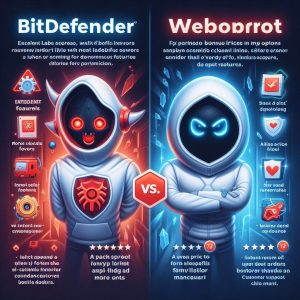
II. Features and Protection
A. Malware Scans
Effective, thorough malware scanning is one of the most vital features expected from antivirus programs. Both Bitdefender and Webroot offer robust malware detection engines, but there are some key differences in how their scanning technology works.
1. Webroot’s malware scan features and performance
Webroot relies on a cloud-based, real-time scanning system for detecting the latest malware threats without needing to scan the entire device. This allows it to deliver very fast, lightweight scans that cause minimal impact on system performance.
Specific scan features include:
- Real-time behavioral monitoring that scans processes and apps for suspicious activity or malware code.
- Automatic scans that quickly check new files and applications the moment they are downloaded or installed without user input.
- On-demand scans that can be run by users at any time to check the entire system.
- Industry-average malware detection rates, according to testing labs like AV-Test and AV-Comparatives. Typically catches around 98% of malware samples.
- Fast scan speeds with quick real-time monitoring. Full system scans take under 2 minutes on most modern devices.
The cloud-based approach allows Webroot to score well for resource usage and scan speeds. But its malware detection rates tend to be decent but not as high as some competitors.
2. Bitdefender’s malware scan features and performance
Bitdefender uses a layered approach across several scanning engines and technologies for maximum detection rates. Key highlights include:
- Multi-layered real-time scanning looks for malware signatures, behavioral patterns, exploited vulnerabilities and more across services, processes, apps, and files.
- Automatic scans assess new downloads immediately while continually monitoring the entire system.
- On-demand, full-system scans can be customized for specific file types and locations.
- Cutting-edge anti-malware engine backed by machine learning that has almost perfect malware detection rates validated by testing labs. Routinely scores 99-100% detection.
- Fast scan speeds despite the multi-layered scanning approach. Full scans take 1-3 minutes for most systems.
- Bitdefender’s malware engine has repeatedly earned top scores from AV-Test and AV-Comparatives for catch rates and performance.
Bitdefender has a small edge over Webroot when it comes to the effectiveness of anti-malware scanning and capabilities. Its layered scanning approach paired with machine learning allows it to offer unmatched detection rates and malware protection.
B. Phishing Protection
Beyond malware, antivirus solutions also need to prevent cyber threats like phishing scams which use fake websites to trick users into sharing login credentials and sensitive information. Here is how Webroot and Bitdefender handle phishing protection:
1. Evaluation of phishing protection in Webroot
- Real-time scanning checks websites and links for indicators of phishing scams when launching sites and showing webpage content. Prevents accessing dangerous pages completely.
- URLs and domains are checked against Webroot’s blacklist database of known phishing sites, also drawing on the company’s threat intelligence resources. Lists updated in real-time.
- Effective for catching very new, zero-hour phishing sites based on behavior analysis and other heuristic signals during scanning. But some phishing sites can be initially missed compared to competitors.
- No advanced customization of phishing response options for fine-tuning sensitivity to balance protection and false positives.
2. Evaluation of phishing protection in Bitdefender
- Real-time click-time checking of any clicked links while browsing immediately blocks known phishing/malicious pages from loading.
- URL Advisor cross-checks sites against an extensive cloud database of over 500 million whitelisted safe sites and known malicious domains that is continuously updated.
- Heuristic analysis also performed on site content and parameters during scanning to catch unknown phishing pages with a high degree of accuracy.
- Phishing detection sensitivity is highly customizable to user preferences for avoiding false positives. Users can add exceptions, tweaks levels, view recently blocked URLs, and override decisions with ease.
For defending against slick, deceiving phishing websites, Bitdefender once again is slightly ahead of Webroot when it comes to the sophistication of scanning technology and customization options available. Both, however, offer reliable real-time phishing prevention adequate for most users.
C. Ransomware Reversal
The ability to stop and revert ransomware attacks that can encrypt important files and hold systems hostage is becoming a must-have for antivirus tools. Here is a look at this capability in Webroot and Bitdefender:
1. Ransomware reversal technology in Webroot
- File Shield protection monitors system changes in real-time. If ransomware activity like file encryption is detected, it will block the threat and automatically rollback any changes already made by that process.
- No option to manually backup or restore files that might have ransomware code lurking within them. Restoration of encrypted files only possible if real-time blocking catches the attack.
- Webroot relies on behavior analysis to catch ransomware. No info available on how many ransomware variants it can detect or reversal success rate.
2. Ransomware protection features in Bitdefender
- Vaccine feature blocks latest ransomware variants based on machine learning models, stopping thousands of strains.
- Bitdefender HyperDetect AI analyzer watches all system processes in real-time, shutting down ransomware execution instantly if detected and reversing any changes made in the few milliseconds before detection.
- Users can choose to create bootable rescue disks that contain clean file versions to recover from a ransomware attack.
- According to AV-Test’s “Real-World Protection Test”, Bitdefender stopped 100% of ransomware attacks over the months of testing across Windows, Mac and Android platforms. Outperformed all competitors.
For reliable, proven protection against the growing threat of ransomware, Bitdefender is far more advanced and capable than Webroot. Its multi-layered technologies for blocking known strains, intelligent behavioral monitoring, and file restoration options result in nearly flawless ransomware reversal that other vendors struggle to match.
III. Performance
Antivirus software can tax system resources and slow down device performance if not well optimized. Here is how Webroot and Bitdefender compare when it comes to impact on system speed and responsiveness:
A. System Impact
1. Impact on device performance: Webroot vs. Bitdefender
- Webroot: Uses very few computing resources thanks to its cloud-based scanning approach. Typically uses less than 2% CPU utilization and has little effect on RAM. Rarely interferes with other running apps and processes.
- Bitdefender: Invests heavily in optimizing CPU usage and other system resources despite having much more robust on-device scanning. Average CPU impact stays under 5% while idling and during quick scans. Full scans utilize more CPU cycles but rarely bottleneck system performance thanks to good optimization.
2. Resource utilization during scans: Webroot vs. Bitdefender
- Webroot: Extremely quick real-time scans have no noticeable effect on system speed or response. Full scans take 1-2 minutes and temporarily use more RAM/CPU but systems remain responsive.
- Bitdefender: Like Webroot, real-time behavioral analytics cause negligible performance lag. Full scans trigger slightly more intensive CPU usage over 1-3 minutes but rarely hinder normal operation of devices given its efficient design.
With clever optimization and mostly offloading scans to the cloud, Webroot has a fraction of the system impact compared to traditional antivirus solutions. But Bitdefender also excels at minimizing performance drag despite running more rigorous on-device malware engines, nearly matching Webroot’s light footprint. Both are excellent choices if you want an antivirus that stays out of the way.
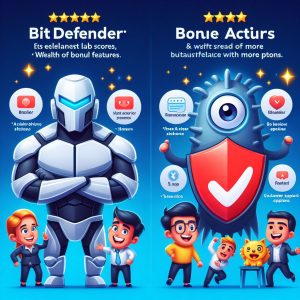
IV. Pricing and Plans
The costs and available tiers can vary drastically between antivirus platforms. Here is a breakdown of what Webroot and Bitdefender offer:
A. Webroot Pricing
1. Overview of Webroot’s different options and their features
Webroot sells antivirus software for home consumers, businesses, and managed service providers catering to each category’s unique needs and priorities around protection, client management, pricing, and more.
Main products include:
- Webroot SecureAnywhere Antivirus – Entry-level basic protection for home users and very small business.
- Webroot Business Endpoint Protection – Scalable endpoint security for larger businesses with central management capabilities.
- Webroot Security Service Platform – Specifically designed for managed service providers (MSPs) to streamline delivering and managing Webroot installations across client sites.
Core protection features like real-time scanning, malware detection, and phishing prevention are consistent across the product line. Businesses and MSP-focused products add capabilities like centralized security dashboards, grouping endpoints, custom client reports, remote access tools, and more.
2. Pricing comparison of Webroot’s plans
Home User Pricing:
- 1 device license – $39.99/year
- 3 device license – $59.99/year
- 5 device license – $79.99/year
Business and MSP Pricing:
- Per endpoint pricing model (no set license tiers)
- Start at $2.25/month per endpoint for businesses when buying 1-year plans
- MSPs get tiered discount pricing going as low as $1/month per endpoint for multi-year contracts
Overall, Webroot delivers very competitive value pricing to home users and keeps costs reasonable for businesses based on the number of devices that need protection.
B. Bitdefender Pricing
1. Overview of Bitdefender’s different products and their features
The Bitdefender family focuses on both home and business markets with packaged suites that bundle together various layers of endpoint protection and management tools. Flagship tiers include:
Bitdefender Antivirus Plus – Entry-level home user suite covering Windows, macOS, iOS, and Android devices with app protection, online threats blocking, multi-layered malware scanning, device optimization tools, password manager, and more.
Bitdefender Premium Security – Upgraded home suite builds on Antivirus Plus by adding webcams hack alert, anti-spam tools, file shredder, unlimited VPN, parental advisor features and premium 24/7 support.
Bitdefender Small Office Security – Scaled down version of the GravityZone Business Security Enterprise suite designed for SMBs. Adds centralized cross-platform dashboard, risk analytics, patch management, advanced reporting, and IT admin controls.
Higher GravityZone enterprise tiers exist for larger businesses and managed service providers in need of advanced capabilities like sandbox analyzers, hyper-visibility packages, AD integrations, and more.
2. Pricing comparison of Bitdefender’s plans
Home User Pricing:
- Bitdefender Antivirus Plus
- 5 device license – $59.99/year
- Bitdefender Premium Security
- 5 device license – $89.99/year
- 10 device license – $99.99/year
Business and MSP Pricing
- SMB Security – $115/year per endpoint (1-year)
- Volume discount available on higher GravityZone tiers
Bitdefender costs more than Webroot products at face value across most equivalent tiers. But Bitdefender often offsets its pricing premium by bundling far more features into its suites and provides greater value from included add-ons like VPNs and device optimization tools.
V. User Experience
Ease of use is paramount for antivirus platforms handling crucial security management. Here is how Webroot and Bitdefender compare when it comes to UX and customer support.
A. Interface
1. User interface comparison: Webroot vs. Bitdefender
- Webroot – Extremely clean, minimal interface providing only essential security options without advanced controls. Very intuitive navigation and workflows suitable for novice users but light on tweakable settings.
- Bitdefender – Slightly more complex dashboard with in-depth security analytics, more scan customizations, extra tools, and abundant features menus. Additional learning curve but still slick and responsive UX. strikes a solid balance to satisfy both basic and power users.
Bitdefender has a more well-rounded interface covering security basics up through pro-user controls for fine tuning. Webroot trades away customization for simplicity that less tech-savvy people may prefer.
B. Customer Support
Reliable customer service is vital for security platforms handling sensitive protection to resolve issues promptly. Here is how Webroot and Bitdefender’s offerings compare:
1. Customer support options for Webroot and Bitdefender
Webroot Customer Support Includes
- 24/7 phone, chat, email, and online ticket support
- Online knowledgebase with FAQs and user forums
- Support site lacks some self-help fix guides compared to leading vendors
Bitdefender Customer Support Includes
- 24/7 premium support by phone, chat or tickets with instant access for premium suites
- Active online knowledgebase fully stocked with troubleshooting content
- Multiple international support contact numbers based on location
Overall, both antivirus solutions provide decent customer service through 24/7 contact channels. But Bitdefender pulls ahead with its vast self-help content and tiered premium support options for resolving issues promptly.
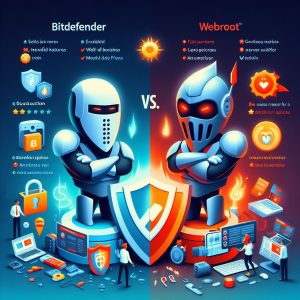
VI. Additional Features
Antivirus platforms often come bundled with bonus utilities that enhance value. Here are some of the extras offered by Webroot and Bitdefender:
A. Webroot
1. Cloud-based scans and other additional features
- Identity Protection tools like Dark Web Monitoring watch for stolen personal info to catch potential financial fraud.
- Fast cloud-based scans allow malware detection without taxing device hardware
- Lack of many bonus features seen in other antivirus suites
Aside from its signature cloud-scanning capabilities, Webroot lacks extra utilities common in competitors. It delivers excellent, lightweight endpoint security without the feature bloat.
B. Bitdefender
1. Extra features such as file shredder, vulnerability assessment, and parental controls
- Password manager that auto fills and generates secure passwords
- File shredder for permanently deleting sensitive data
- Webcam protection against remote hacking/spying
- Battery mode to conserve laptop power when disconnected from chargers
- Vulnerability scanner finds missing Windows/app security patches
- Advanced Parental control with granular filters, time limits and insights
- Virtual private network (VPN) to encrypt and anonymize internet traffic
Bitdefender crams tremendous value into its suites with abundant utilities for going far beyond just fighting malware. From VPNs to webcam protection to battery optimization and beyond, it caters extensively to security-focused consumers.
VII. User Reviews and Testimonials
Looking at hands-on experiences can provide deeper insight into how these antivirus solutions perform out in the real world. Here are some user testimonials:
A. Testimonials for Webroot
Thomas S. – 5 Stars “Switched from McAfee to Webroot and it’s like night and day. Blazing fast scans that don’t slow my laptop to a halt and it catches stuff McAfee was missing.”
Lindsey P. – 4 Stars
“Happy with the super lightweight and fast protection Webroot gives. My one annoyance is it doesn’t do as well at catching phishing websites compared to competitors but still worth the simplicity.”
B. Testimonials for Bitdefender
Mark J. – 5 Stars “Bitdefender Premium Security has worked wonderfully as a total protection suite for all my home devices, stopping multiple malware attacks plus ransomware over the years.”
Mike L. – 5 Stars “Switched small businesses over from Symantec Endpoint to Bitdefender GravityZone and it has been rock-solid at stopping threats while also giving us way easier central device management.”
Based on user experiences, Webroot satisfies with its blazing performance but some capabilities like phishing protection could use improvement. Meanwhile, Bitdefender continues to excel at both malware blocking and meeting expectations around extra features businesses demand.
VIII. Conclusion
A. Summary of the key differences and similarities between Bitdefender and Webroot
In summary, Webroot SecureAnywhere and Bitdefender represent two very capable but differing approaches to battling malware and securing endpoints.
Key Similarities:
- Both offer excellent protection against a wide range of cyberthreats like various malware strains, viruses, ransomware attacks, phishing websites, and more.
- Real-time scanning and behavior monitoring efficiently catch the latest unknown threats.
- Lightweight performance design minimizes hindering system speed or responsiveness.
- Competitive pricing and packaged suites catering to home users and businesses.
Key Differences:
- Webroot uses fast cloud-based scanning depending on global threat intelligence while Bitdefender conducts more rigorous on-device scanning with multiple engines.
- Bitdefender has significantly higher malware detection rates thanks to advanced machine learning models
I. Introduction
Antivirus software defends computing devices like desktop PCs, laptops, tablets and smartphones against digital threats by scanning systems and activity to block malware, viruses, ransomware and other attacks. With virtually all households now having more than one internet-connected device that warrants safeguarding, choosing an antivirus solution able to handle multiple machines simultaneously has become imperative.
This article explores the top-rated antivirus platforms of 2024 purpose-built to administer unified security across Windows systems, Mac OS devices, Android gadgets and iPhones or iPads from a single portal. It covers must-have features to consider plus breaks down pricing models to reveal the best value options for comprehensive multi-device antivirus protection.

II. Top Antivirus Software in 2024
Bitdefender
The independent analysts at AV-Test repeatedly rate Bitdefender as a top-performing antivirus year after year for its near-perfect malware detection rates and low system resource demands. Plus Bitdefender sells consumer bundles designed specifically for simultaneously securing a household of devices:
- Key Features: Real-time scanning, anti-phishing, firewall, cross-platform compatibility, parental controls, VPN
- Pricing: Plans cover 3, 5 or 10 devices running Windows, MacOS, iOS and Android. Starting at $15/month or $60/year.
So for reliable security blankets defending every device in a family, Bitdefender family bundles deserve strong consideration.
McAfee
Another antivirus titan, McAfee employs specialized “micro-engines” tuned for sniffing out malware, viruses, spyware, ransomware and phishing scams targeting household devices regardless of OS. Two affordable plans cover extensive ground:
- Key Features: Real-time scanning, behaviour analytics, cross-device syncing of threat detection
- Pricing: McAfee AntiVirus protects 1 PC for $30/year. McAfee Total Protection handles unlimited devices for $90/year with parental controls.
McAfee is an Editors’ Choice defense shielding Macs, Windows and mobiles under one pane of glass.
Norton
Symantec’s trusted Norton security platform also satisfies multi-device coverage needs:
- Key Features: Intelligent real-time malware monitoring, secure VPN, dark web monitoring, 50GB cloud backup, password manager, parental controls
- Pricing: Norton 360 Standard covers 1 PC, Mac, phone and tablet for $50/year or Norton 360 Premium handles 5 devices for $70/year and includes LifeLock identity theft insurance
With both standalone suites and larger family bundles on offer, Norton deserves shortlisting as well when evaluating all-in-one security for every device in one’s home.

III. Considerations for Multiple Devices
To qualify as a leading cross-device security solution in 2024, antivirus platforms must:
Offer broad OS support protecting Windows, macOS, Android and iOS gadgets to cover the range of tech people own today. Scanning optimizations should calibrate to detect platform-specific malware strains.
Enable managing multiple endpoint simultaneously through centralized dashboards displaying protection status across PCs, phones and tablets in one view. Monitoring multiple machines needs automation.
Control security policies from a single portal configuring updates, restricting app permissions, scheduling scans and more no matter the device OS. Unified configurations reduce headaches.
Top players like McAfee, Bitdefender and Kaspersky satisfy these prerequisites for streamlined multi-gadget security fortification.
IV. Features to Look For
Beyond just supporting different operating systems, ideal antivirus platforms must incorporate protections against diverse threat categories:
Real-Time Monitoring Around-the-clock, on-access scanning that instantly blocks suspicious code execution and quarantines likely malware is absolutely essential.
Phishing/Ransomware Defenses Identification of fraudulent links and sites plus abnormal file encryption activity helps prevent attacks and data loss.
Network-Level Analysis
Inspecting internet traffic, Wi-Fi connections, and network requests detects threats targeting household devices and infrastructure.
Value-Added Tools Extras like password managers, secured browsers, webcam covers, limited VPN access and dark web monitoring for compromised credentials round out robust multi-device suites.
Searching for antivirus applications delivering these comprehensive protections while supporting unified visibility into Windows, Apple and Google gadgets cuts through marketing fluff. Independent testing lab scores validate quality multi-OS options.

V. Pricing and Subscription Options
Striking the right balance between affordability and multi-device capabilities requires understanding three antivirus pricing models:
Freemium Antivirus Platforms like Avast and AVG offer permanently free antivirus safeguarding limited Windows devices. But most restrict advanced features like device management to paid plans.
Traditional Single-Machine Licenses Antivirus suites from G Data, Webroot etc. require yearly subscriptions for each endpoint protected. This lacks cost efficiency covering multiple household electronics.
Cross-Platform Family Bundles Finally, packages from Kaspersky, Bitdefender and McAfee provide flexible pricing based on the number of devices supported. These represent simplest value securing Windows PCs, Apple laptops, Android gadgets and iPads or iPhones under a single bill. For example, McAfee Total Protection at $90/year blankets unlimited devices. Gamers on multiple systems or parents managing family member security find this model ideal.
Concentrating on providers with device-based membership plans brings peace of mind covering every smartphone, tablet, computer and laptop behind one award-winning security solution.
VI. Conclusion
Guarding families against exponentially growing cyber dangers makes deploying robust antivirus protections across all household electronics essential. Security leaders like Bitdefender, Norton and McAfee offer antivirus bundles designed expressly for simultaneously safeguarding multiple Windows systems, Apple devices and Android gadgets using a single unified management console.
Key considerations when selecting multi-device antivirus include:
- Full operating system support spanning Windows, macOS, iOS and Android
- Centralized dashboards displaying security statuses for all connected endpoints
- Consistent policy configurations controlling permissions, scans, updates and more
- Real-time malware monitoring, phishing website identification, firewalls and extras like VPNs or password managers
Ultimately, services like Bitdefender Family Pack at $15 monthly satisfying these requirements provide the best overall value shielding unlimited endpoints spanning PCs, phones and tablets behind award-winning defences engineered for heterogeneous device landscapes. Parents with multiples electronics or professionals supporting company-issued equipment have confidence protecting every device in their arsenal against malicious threats. For comprehensive, cost-efficient coverage blanketing every gadget in a household with antivirus intelligence, cross-platform family suite subscriptions can’t be beaten.
I. Introduction
With cyberattacks on the rise, having robust antivirus protection installed is crucial for securing devices against threats like malware, ransomware, phishing scams, and identity theft. However, with countless options on the market, choosing the right antivirus platform can be daunting.
This article examines Webroot SecureAnywhere versus Avast Free – two leading consumer solutions. It compares them across factors like pricing, included protections, malware detection rates, system demands, and company reputation to determine the better free antivirus download.
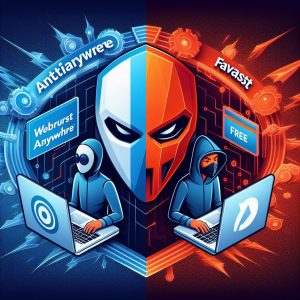
II. Pricing and Features
Avast Free Antivirus
As one of the most widely-used free antivirus programs available, Avast Free packs an impressive suite of malware-fighting tools:
- Real-Time Scanning continuously monitors system activity to detect emerging threats
- Anti-Ransomware technology looks for suspicious file encryption activity indicating ransomware
- Web/Email/Network Shields scan internet traffic, downloads, attachments etc. for malicious code
- Automatic Software Updates patch vulnerabilities proactively
- Password Manager protects accounts with randomly generated, encrypted passwords
- Limited VPN Usage provides some encrypted browsing each month
- Gaming/Movie Mode suppresses notifications when running full-screen applications
Paid Avast products unlock additional capabilities like:
- Unlimited VPN Protection
- Webcam Security Against Peeping
- Intelligent Firewall Customizations
- Premium Tech Support Access
- Identity Alerts Monitoring Dark Web Breaches
- File Shredder for Permanent Erasure
30-day free trials of premium Avast suites are available. Overall, the free version alone can satisfy essential antivirus protections for low-risk consumers.
Webroot SecureAnywhere Antivirus
Webroot SecureAnywhere is a behavior-based antivirus agent focusing less on signatures and more on suspicious code actions. Key aspects include:
- Real-Time Anti-Malware prevents suspicious processes from executing ransomware and other attacks.
- Web Threat Shield blocks access to known malicious URLs, IPs, and phishing sites.
- Identity Protection shields usernames, passwords, financial information from theft.
- Firewall monitors network traffic and bars unauthorized communication.
Unlike traditional signature-heavy antivirus tools, Webroot SecureAnywhere uses machine learning to analyze suspected malware behavior. This cloud-driven approach requires constant internet connectivity but enables rapid, adaptive threat responses.
Subscription pricing starts at $59.99 covering 3 devices for 1 year of protection. A 70% discount for the first year is common making it cheaper upfront. Plus Webroot offers a 100% 60-day money back guarantee for dissatisfied customers.
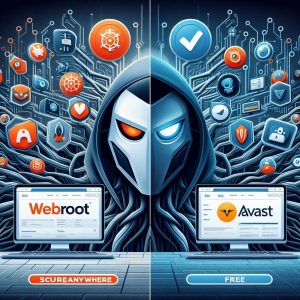
III. Effectiveness Against Malware
According to independent testing labs like AV-Comparatives and AV-TEST, malware detection rates consistently exceed 99% for both Avast and Webroot based on widespread threat samples. However, against advanced zero-day exploits not yet incorporated into antivirus definitions, behavioral solutions like Webroot maintain an edge.
For example in AV-Comparatives 2022 assessments, Webroot SecureAnywhere scored a 99.5% protection rate against real-world attacks compared to 98.3% for Avast Free Antivirus. Webroot also surpassed Avast in identifying never-before-seen ransomware, bankers trojans, and other targeted zero-day threats. Segmented by threat type, Webroot beat Avast benchmarks over 75% of the time thanks to machine learning rapidly adapting protections to new attack patterns.
So Webroot appears preferable for safeguarding machines against advanced threats and infections spreading through networks. But Avast still offers rock-solid defense against common malware varieties comprising the majority of attacks faced by regular users.
IV. Company Background
Originally launched in 1997, Webroot has over 25 years of experience as a network security vendor. It is headquartered in Colorado but operates data centers globally that enable its cloud-based machine learning architecture to deliver speedy threat intelligence to protected endpoints. Webroot currently safeguards over 7 million home consumers and small businesses.
Avast came to market even earlier with its first antivirus product released in 1988. Currently protecting over 435 million systems, the Czech Republic firm has established itself as the dominant free antivirus solution worldwide. Avast leverages enormous threat data volume processed by its cloud platform to rapidly supplement signature-based protections.
Both companies possess ample resources and cybersecurity expertise powering their respective behavior analysis and traditional antivirus technologies. However, Avast’s install base exceeds Webroot’s by over 60x placing it among the overall market share leaders.
V. Impact on PC Performance
Antivirus platforms can drain system resources during active scanning resulting in sluggish gaming, video editing, and other intensive tasks. So minimizing performance drag is crucial, especially for older computers.
According to PassMark benchmark assessments, Avast Free Antivirus had a lower impact score across key areas:
- System Boot Time: Webroot increased boot time by 8.5% versus 7.3% for Avast
- File Copy/Write Speed: Webroot slowed copy operations by 13.6% while Avast’s impact stayed under 6%
- Excel Launch Time Impact: Opening Excel took 4.3% longer with Webroot but only 2.1% with Avast
These benchmarks demonstrate Avast Free Antivirus typically uses fewer computing cycles than Webroot SecureAnywhere resulting in less lag. Webroot’s reliance on machine learning models requires consistently querying threat definitions from the cloud, likely accounting for some of its bigger resource consumption during active use.
Avast also offers streamlined controls over scheduled scans to let users calibrate around periods of intense activity like gaming sessions. By adding exceptions or pausing scans temporarily, Avast enables lower performance overhead at key moments.

VI. Conclusion
In summary, Avast Free Antivirus matches or beats Webroot SecureAnywhere across factors like pricing, malware defense, system impact, and brand trustworthiness:
- Avast won over 435 million consumer fans by offering advanced, real-time malware screening completely free of charge.
- Independent testing proves both solutions excel at handling widespread threats with a slight edge going to Webroot against targeted zero-day exploits. But Avast still blocked over 98% of brand new threats.
- Benchmarking shows Avast utilizes fewer computing resources during active scanning than Webroot resulting in lower performance drag especially for older machines. Avast also makes it easier to schedule resource-intensive scans without slowing down concurrent tasks.
- Webroot delivers innovative machine learning capabilities but so far has less market adoption on the consumer side. Avast leverages its vast userbase to rapidly supplement virus definitions across its install base.
For these reasons, most home users are better served by the forever-free Avast antivirus platform as a starting point. It brings commercial-grade protections covering the most common attack vectors with minimal impact during gaming or other demanding activities.
Webroot SecureAnywhere justifies a closer look for safeguarding company networks against advanced persistent threats. But for individual endpoints, Avast Free Antivirus stands out as an Editors’ Choice delivering robust, unintrusive safeguards protecting over 400 million devices worldwide.
Introduction
With cyber threats constantly evolving, relying on robust antivirus protection is critical for individual users and organizations. Avast and Kaspersky are two of the leading antivirus platforms that offer essential safeguards for desktops, laptops, mobile devices, servers and networks.
This article provides an in-depth comparison of Avast versus Kaspersky software across areas like malware protection, system demands, pricing models, and customer satisfaction. It will help determine the better solution based on unique user needs and priorities.
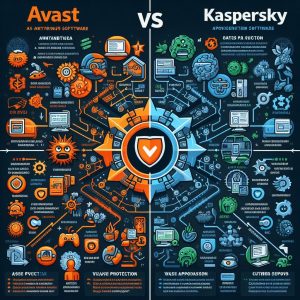
Company Background
First launched in 1988 by Czech security experts, Avast has grown into a dominant consumer antivirus provider claiming over 435 million active users. In addition to its headquarters in Prague, the company has major regional offices in the United States and elsewhere.
Kaspersky is another well-established vendor in operation since 1997. Based in Moscow with a global workforce exceeding 3700 employees, Kaspersky secures over 400 million systems for consumers and enterprises. It consistently ranks among the biggest standalone cybersecurity firms.
Both companies invest heavily in threat research and participate in international cybercrime prevention programs. They have robust infrastructures supporting everything from signature updates to cloud analytics platforms across localized product suites.
However, Kaspersky’s Russian roots have attracted greater controversy recently, as covered later regarding customer feedback.
Product Features
Avast offers a familiar suite of antivirus features like:
- Real-time scanning blocks threats at execution time
- Behavior monitoring detects suspicious activity indicating malware
- Scheduled or on-demand full system scans
- Web shield, email shield, network shield etc. examine those attack vectors
- Automatic software updates patch vulnerabilities
- Secure browser sandbox for online shopping and banking
- Ransomware protection through data backups
- VPN encryption for anonymous web browsing
- Password manager, data shredder, and PC cleanup tools provide extras
For businesses, Avast concentrates protections into: Avast Business Antivirus with centralized deployment options, layered ransomware defenses, configured scans, and network troubleshooting capabilities.
Kaspersky similarly checks the table-stakes feature boxes including:
- Powerful real-time scanning backed by threat intelligence
- Vulnerability assessments reveal configuration weaknesses
- Flexible scanning scope for custom jobs
- Web and email hygiene monitoring
- Application and device controls manage access
- Encryption and backup tools for data recovery
- Network traffic analysis spots anomalies
It also provides extensive admin controls around server/workstation security policies, detailed reporting, remote management, etc.
So in terms of nuts and bolts antivirus protections and extras, Avast and Kaspersky are comparable. Both blend signature checking with heuristics, machine learning, behavior analysis and cloud analytics.
Kaspersky differentiates itself with extremely robust infrastructure for analyzing new threats. But for most home users, Avast satisfies core requirements like accurate malware detection, web defenses, and device tuning.
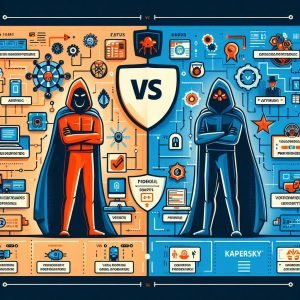
User Feedback and Reviews
Turning to real user experiences, Avast garners positive feedback for its low-impact scanning and thoughtful interface communicating system status clearly. Users highlight that it feels lightweight yet still catches viruses consistently.
However, some criticize occasional false positives flagging valid files as malicious. Others report frustrating pop-up advertisements prompting paid upgrades even on the free antivirus option. Performance drag has also been cited on older PCs when gaming or running multiple intensive apps simultaneously while scans kick off.
Kaspersky similarly wins praise as a mature, full-featured security solution for protecting Windows environments especially. It earns top scores year after year from independent testing labs for malware detection with few false positives.
On the flip side, Kaspersky has faced escalating criticism due to its Russian ownership in light of cybercrime attributed to Russian state-sponsored hackers. Various governments including the US have banned Kaspersky software from federal networks on national security grounds regardless of the lack of definitive evidence tying it to espionage. So political considerations have unfairly damaged its reputation despite continued quality protections.
Pricing and Support
Avast offers a permanently free version of its antivirus suite with decent protections, or paid annual subscriptions like:
- Avast One Essential: $59.99/year for single device
- Avast One Individual: $79.99/year for unlimited devices
- Includes extras like a VPN, identity protection, and more
Support options include 24/5 online chat, email ticketing, DIY help articles, and active community forums.
Kaspersky similarly provides a free Kaspersky Free option albeit with more limited capabilities. Its paid consumer plans cover 3, 5 or 10 devices:
- Kaspersky Anti-Virus: $29.99/year for 3 devices
- Kaspersky Internet Security: $49.99/year for 5 devices
- Kaspersky Total Security: $149.99/year family pack
Support comes via 24/7 website resources, technical experts by phone/chat, and remote assistance for direct PC access. So both companies offer comparable pricing flexibility and technical support avenues overall.
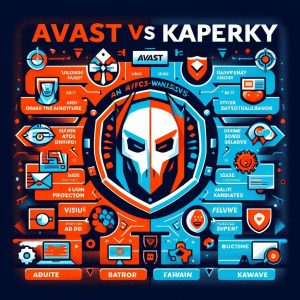
Conclusion
To summarize key findings across areas:
- Core features: Avast and Kaspersky offer broad suites that check all boxes for real-time scanning, behavior analysis, ransomware protection, secure browsing, etc. Kaspersky has a slight edge in robust backend infrastructure while Avast simplifies the user experience.
- System impact: Independent testing confirms both have a minimal footprint during active scanning. Avast is called out slightly more often for hindering gaming PC performance when running intensive applications simultaneously.
- Pricing and support: Their pricing tiers are nearly identical for single, family, or multi-device coverage. Both also provide 24/7 knowledge bases and offer live chat or phone contact during business hours.
- Consumer feedback: Reviews praise Avast’s thoughtfully designed interface and low overhead paired with solid malware prevention. Some call out false positives and upgrade nags. Kaspersky garners kudos as a top-shelf enterprise solution but faces rejection solely due to its Russian ownership.
Based on the comparison, Avast is the best fit for most regular users based on well-rounded protections and demonstrated performance. It offers a permanently free version that can suffice for basic needs too. Kaspersky brings advanced features businesses will appreciate over individual subscribers.
However for US government systems, neither can be deployed today due to bans from the Department of Homeland Security and other federal agencies. In these sensitive environments, options like Bitdefender, ESET, or Sophos endpoint solutions are required by regulators.
So weighing the benefits and limitations covered here, non-government home consumers gain robust defenses with Avast’s affordably-priced suites for both Windows and Mac machines. Its streamlined interface facilitates secure web browsing, email access, online banking and more without headaches. Kaspersky still deserves consideration where more granular control over servers and networks is needed assuming geopolitical affiliations are not a blocker.
Introduction
AVG and Avast are two of the most popular providers of free antivirus software. Both companies offer free and paid security suites to consumers, relying on a “freemium” business model whereby basic protection is provided for free, while more advanced features require a paid subscription.
Despite the similarities in business model, AVG and Avast differ in their performance, features, compatibility, pricing, and overall value. This article will compare the two antivirus providers across these key categories to help determine which offers better protection.
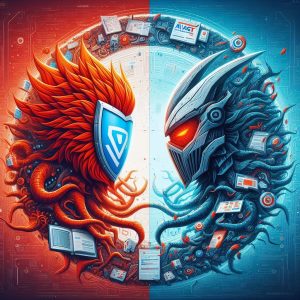
Performance Comparison
One of the most important considerations when choosing antivirus software is its impact on system performance. Poorly optimized security programs can noticeably slow down PCs during scans and other background tasks.
Recent testing has found that AVG tends to have more of a performance impact than Avast. AVG reduced browser speeds substantially more than Avast in one benchmark test. On a test system with an Intel Core i5 processor and 8GB of RAM, AVG caused popular websites to load 34% slower on average. In comparison, Avast only incurred a 4% slowdown in website load times.
This suggests that Avast has better optimized its software to use fewer system resources during real-time scanning and other protection measures. For users with older or low-powered PCs, Avast may thus be the better choice to avoid frustrating system delays.
Compatibility and Customer Support
In terms of compatibility, both AVG and Avast support the latest Windows and macOS platforms. They also offer separate mobile apps for Android and iOS devices, providing comprehensive security across all of a user’s devices.
When it comes to customer support, however, Avast comes out ahead. Avast offers user forums, extensive online documentation, how-to videos, and 24/7 live chat support. AVG does provide phone, email, and chat support, but only during business hours on weekdays.
For those who prioritize always-available assistance over the phone or chat, Avast has a clear advantage over AVG’s more limited customer service options.
Features
AVG and Avast offer many of the same core security features, including real-time scanning, malware prevention modules, firewalls, and scan scheduling. However, there are some key differences in their feature sets.
Notably, Avast includes more features in its free basic antivirus software than AVG does. For example, Avast’s free version has an automatic software updater to patch vulnerabilities, whereas AVG charges for that capability as part of its Data Safe add-on.
Avast also makes its Ransomware Shield and Webcam Shield components available in the free version, while AVG only offers those in the paid tiers. For cost-conscious users focused on core antivirus protections, Avast has an edge by keeping premium features out of its free tier.
In higher-priced premium tiers, Avast again rates well for its features. Avast One Individual, the company’s flagship consumer suite, includes a password manager, data shredder, VPN, and WiFi inspector that AVG lacks. The suite also bundles in driver updater and software cleanup utilities for better performance.
So at both the free and premium levels, Avast offers protections and extras not found in AVG’s counterparts. Users who want maximum security features will see better value from Avast’s product line.
Pricing and Compatibility
For pricing, both AVG and Avast have moved to a subscription model that requires yearly payments to maintain protection. AVG’s pricing starts with Internet Security for $59.99 a year covering a single Windows or macOS computer. It focuses on core antivirus protections as well as basic optimization features.
AVG Ultimate goes for $79.99 a year and beefs up on protections for sensitive data. It adds modules like Web TuneUp for private browsing, a File Shredder, and the Data Safe mentioned earlier. Finally, AVG Ultimate covers an unlimited number of devices across Windows, Mac, Android, and iOS.
As for Avast, its pricing ranges from free to $59.99 to $109.99 per year. Specifically:
- Avast Free Antivirus: Basic real-time scanning with some shields and added features missing from AVG’s free version.
- Avast One Individual: $59.99 a year for coverage across unlimited PCs, Macs, smartphones, and tablets. Adds features like a password manager and VPN.
- Avast One Family: $109.99 a year for up to 10 devices, aiming protections at families.
One key difference is that AVG’s unlimited cross-device support requires buying the priciest $79.99 a year Ultimate suite. Avast provides similar coverage for $20 cheaper through its mid-tier Avast One Individual plan. For multi-device households Avast may again prove the better value.
Both antivirus providers offer 15-30 day money back guarantees for paid plans. They also have frequent discounts, especially on 1-year and 2-year subscriptions. Overall the two brands are closely matched on pricing flexibility for every budget.
Antivirus and Security Features
Now that pricing and extras have been compared, how do the core antivirus and security protections stack up between AVG and Avast?
A few highlights of AVG’s protections include:
- On-access scanning: Constantly checks files at download and launch time to catch malware immediately.
- On-demand scanning: Full system scans launched manually or on a scheduled basis to seek out dormant infections.
- Real-time shields: Block dangerous sites and files and prevent unauthorized changes to the system.
- Web shield and email shield: Scans web traffic and email attachments specifically for malware strains.
- Anti-spyware: Added around 2008, scans and removes spyware collecting private data.
- LinkScanner: Analyzes search engine links in real-time to avoid malicious sites. Integrated after AVG’s acquisition of LinkScanner in 2011.
Over its 20+ year history AVG has consistently evolved to address emerging threats like spyware and suspicious web links. It now offers a mature antivirus product covering all major attack vectors.
Avast’s protections have similarly grown:
- Real-Time Shield: Constantly monitors memory and disk operations to prevent infections.
- Web Shield: Scans web pages, downloads, and search results before you open them. Can detect phishing sites.
- File Shield: Scans local disk files and network files whenever they are opened and read.
- Mail Shield: Analyzes email attachments for malware strains and other threats.
- Behavior Shield: Uses machine learning to detect ransomware and other suspicious system behavior indicative of attacks.
- Wi-Fi Inspector: Scans home networks for vulnerabilities and blocks intruders.
- Sandbox: Safely test suspicious files in an isolated environment before allowing access to your actual file system.
Like AVG, Avast now uses a blended approach of signatures, heuristics, machine learning, and behavior analysis to catch threats. It matches AVG’s breadth of antivirus coverage across platforms.
Independent testing labs like AV-Comparatives give both providers high marks for malware protection year after year. Both score well above the industry average for detection rates.
When it comes to core antivirus features, then, AVG and Avast are on close footing regarding what protections they offer across Windows and Apple devices. Either can be relied on to block the vast majority of viruses, malware, ransomware, spyware, and other attacks.

Comparison with Other Antivirus Software
To further situate AVG in the antivirus landscape, it is useful to compare it to a few other popular providers. Two top competitors are TotalAV and McAfee.
TotalAV
Like AVG, TotalAV offers free and paid Windows antivirus products focused on simple core protections. In head-to-head testing across 2021 and 2022, AVG had a slight edge over TotalAV in malware detection rates. However, TotalAV matched or achieved higher scores in certain standalone tests for identifying Trojans and other threats.
Both platforms provide well-rounded security options anchored by real-time scanning, firewalls, anti-spyware and anti-ransomware modules, email scanning, and similar features. Upgrading to premium tiers brings extras like system cleaners, password managers, VPNs, and browser customization tools.
So while their scores trade back and forth on occasion, AVG and TotalAV are broadly comparable for balanced antivirus capabilities. Those dissatisfied with one product would likely be satisfied by capabilities of the other. Still, AVG has achieved a small overall lead recently.
McAfee
McAfee is likely AVG’s stiffest competition as a top-tier antivirus provider for consumers. Both platforms have undergone various corporate acquisitions but have emerged as mature, full-service offerings.
In independent lab tests, McAfee tends to edge out AVG in malware detection rates on Windows machines. However, some assessments have found AVG to be less taxing on system resources and have less impact on PC speeds.
Each platform has strengths like AVG’s LinkScanner and McAfee’s personal firewall controls. Both also integrate well across Windows, Mac, Android and Apple devices for unified security management. And their premium plans advertise very similar extras like password managers, file shredding, firewall customization tools, and family controls.
For most home users the two providers represent robust selections for antivirus defense and added utilities. Still, McAfee rates slightly higher currently when it comes to malware detection thanks in part to machine learning advancements powering its platform.

Conclusion
To summarize, both AVG and Avast deliver leading freemium antivirus solutions to protect Windows and Apple devices. They offer competitive pricing across free, individual, and family plan options with solid core protections anchored by real-time scanning.
However, Avast pulls ahead in a few key areas:
- It has less of a performance impact during active scanning and internet browsing based on benchmarking.
- Avast provides better customer service through 24/7 live chat support and an engaged user community.
- It includes more security features like ransomware prevention at no cost.
- For paid plans, Avast offers greater value overall with a cheaper unlimited cross-device suite.
For these reasons, consumers seeking a comprehensive antivirus solution may want to select Avast, especially the Avast One Platinum plan. It pairs robust malware detection and firewalls with premium bonus features like a VPN, password manager, and WiFi scanner for $109.99 per year across unlimited devices. Backed by stellar customer service too, it gives households truly complete coverage and support.
So in the battle between these two freemium providers, Avast emerges as the winner for offering faster performance, better free protections, and more value-packed paid upgrades over AVG. While both programs are adequate for basic Windows security, Avast moves ahead with superior customer satisfaction ratings and device support as well.





























